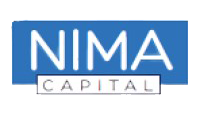
Liquity Airdrop
Liquity is a decentralized protocol that allows users to obtain interest-free loans backed by ETH collateral. The system is underpinned by its LUSD stablecoin, maintaining stability through liquidation mechanisms and decentralization. By avoiding governance layers, Liquity emphasizes resilience, low fees, and accessibility, positioning itself as a significant player in the DeFi lending landscape.
Project Review
Problem Solved
Liquity addresses the high cost and complexity of borrowing in the DeFi space by offering interest-free loans secured by Ethereum (ETH) collateral. With Liquity V1, users can borrow LUSD, a dollar-pegged stablecoin, with the promise of transparency and decentralization. V1's design includes a novel redemption mechanism to maintain LUSD's peg, where users can redeem their LUSD for ETH at a 1:1 ratio, providing stability without relying on traditional interest mechanisms.
The evolution to Liquity V2 introduces several enhancements aimed at improving capital efficiency and user experience. V2 allows for user-set interest rates, giving borrowers the ability to adjust their borrowing costs according to market conditions. It also supports multiple collateral types, including liquid staking tokens like stETH and rETH, expanding the borrowing options beyond ETH alone.
Additionally, V2 introduces BOLD, a new stablecoin designed to benefit from these improved peg dynamics and yield opportunities, providing a more flexible and responsive system to the volatile DeFi environment. These changes aim to solve the limitations of V1, such as inflexibility in interest rates and collateral options, thereby enhancing the protocol's utility and appeal in the broader DeFi ecosystem.
A notable architectural choice for Liquity is its fork-friendly design that makes it easy for other developers or teams to replicate, adapt, or build upon the Liquity protocol. Instead of imposing restrictive licenses or heavy governance layers, Liquity’s core smart contracts are open-source and immutable. This means anyone can take the protocol’s underlying code and create their own version of it—either as a direct copy (a “fork”) or as a base for new features and integrations.
One of the reasons this design is considered advantageous is that it promotes a more dynamic ecosystem. By making the code freely accessible and easy to replicate, Liquity encourages other projects to explore different use cases, interfaces, or tailored versions of the protocol. Over time, this can lead to improved user experiences, more specialized lending or borrowing products, and innovative tools that all rely on the same robust foundation.
Tokenomics
Liquity's ecosystem includes several assets, each serving distinct roles. LUSD is Liquity's primary stablecoin, pegged to the US dollar. LUSD is used for borrowing, repaying loans, and providing liquidity in DeFi applications. With the introduction of V2, BOLD emerges as another stablecoin, offering enhanced features like flexible interest rates and support for multiple collateral types, aiming to provide more yield opportunities alongside LUSD.
The core token, LQTY, plays a pivotal role in incentivizing participation within the Liquity ecosystem. Initially, LQTY was not for governance but served to reward users by allowing them to stake and earn a share of borrowing and redemption fees. This staking mechanism promotes network stability and user engagement. LQTY was distributed through a fair launch with no pre-mine, ensuring a decentralized allocation. There's a fixed supply of 100 million LQTY tokens, with no new issuance after the initial distribution, which aids in maintaining token value through scarcity.
In V2, LQTY expands its utility by taking on governance roles, where staked LQTY holders can influence decisions related to BOLD's interest and collateral policies, thus broadening its significance beyond just fee distribution. This structure is designed to balance economic incentives with user engagement, fostering long-term sustainability and growth within the Liquity protocol.
Perspectives
Liquity’s updated protocol, particularly the introduction of V2, appears set to offer meaningful advancements in DeFi lending. Central to this evolution is the concept of user-set interest rates, designed to respond more flexibly to shifting market demand. If successful, this approach could allow utilization rates beyond the limits of existing pooled lending platforms (such as AAVE), potentially improving capital efficiency for borrowers and liquidity providers.
From a security standpoint, the codebase formal verification suggests a focus on building trust and attracting more serious capital. This could position Liquity as a reliable option in a market where security remains a top concern. Alongside this, the fork-friendly design ethos may stimulate ecosystem growth by encouraging collaborative expansions rather than zero-sum competition.
However, maintaining LUSD’s peg amidst market volatility will remain a core challenge, as will navigating evolving regulatory landscapes around stablecoins. Additionally, while user-set interest rates are conceptually appealing, their real-world reception and ability to handle dynamic market conditions are yet to be tested.
Overall, community discussions convey excitement tempered by realism. The theoretical merits are clear, but Liquity’s ability to grow its TVL and deliver consistent yields will ultimately depend on its resilience, adaptability, and the broader market’s long-term response.
Founders and Team
Liquity was launched in April 2021 by Robert Lauko and Rick Pardoe, with Michael Svoboda originally serving as the Chief Operating Officer before transitioning to the role of CEO in 2022. Robert Lauko, a former researcher at DFINITY—a startup known for developing the Internet Computer project—began conceptualizing and prototyping Liquity in 2019. He brought deep expertise in decentralized systems and blockchain innovation to the initiative.
In 2020, Lauko partnered with Rick Pardoe, an experienced engineer specializing in Solidity and smart contract development. Pardoe had previously worked with ETHDevs, where he honed his skills in building and maintaining blockchain-based systems. Together, they laid the technical and strategic groundwork for Liquity.
The core team’s combined experience in blockchain research, engineering, and project management provides a solid foundation for driving the Liquity’s growth and success.
Funding
Investors: Tomahawk.VC
Investors: Polychain Capital (lead), a_capital, Lemniscap, 1kx, DFINITY Ecosystem Fund, Robot Ventures, Alex Pack
Investors: Pantera Capital (lead), Nima Capital, Alameda Research, Greenfield, IOSG, AngelDAO, Tomahawk.VC, 1kx, Lemniscap, Bo Shen, Meltem Demirors, David Hoffmann, Calvin Liu, George Lambeth
Liquity has established a robust financial foundation through multiple funding rounds and a sustainable revenue structure. The project secured initial backing during a pre-seed round in 2020 from Tomahawk.VC, followed by $2.4 million raised through a Seed led by Polychain Capital and a Series A round spearheaded by Pantera Capital.
Liquity’s revenue model was primarily fee-based, generating income from borrowing and redemption fees within its ecosystem. Borrowers incur a one-time variable borrowing fee, which is algorithmically determined. Additionally, redeemers pay a fee when exchanging LUSD for ETH. The platform has implemented mechanisms such as the refundable 200 LUSD Liquidation Reserve to address transaction costs, further enhancing operational efficiency.
As of now, Liquity has generated $29.4 million in cumulative fees according to DeFiLlama, underlining its capability to sustain its operations. With the introduction of Liquity V2, the shift to interest-based revenue further positions the project for long-term financial viability.






Community
Liquity's community sentiment is noticeable positive, particularly following the launch of Liquity V2. The protocol's emphasis on security, with formal verification of its codebase, and the introduction of novel features like user-set interest rates have been well-received by its user base.
Social media platforms and forums, including Reddit and X (formerly Twitter), show a bullish sentiment towards Liquity, with recent data indicating around 56.82% to 60.26% of tweets being positive about Liquity. Initiatives like the Community Reward Program and LiquiFrens have further fostered a sense of involvement and positivity, rewarding contributions that enhance awareness and adoption of the protocol.
While the general sentiment is positive, there are areas of concern due to the inherent risks in DeFi, particularly concerning market dynamics and regulatory landscapes. The project's community is also relatively small, with 67,100 followers on X and 5,100 members on Discord.
Competitors
Liquity operates within the highly competitive DeFi lending and stablecoin sector, where its main competitors include MakerDAO, Aave, and Compound. MakerDAO's DAI is a significant rival in the stablecoin space, offering a decentralized borrowing platform with a similar ethos of stability through collateralized debt positions. Aave and Compound, on the other hand, are known for their pooled lending models, allowing for interest-bearing loans with a broader range of collateral types.
Currently, Liquity holds a niche position in the market, focusing on simplicity and efficiency through its interest-free model for LUSD borrowing backed by ETH. Unlike its competitors, Liquity does not charge interest on loans, which is a unique selling point. However, its market share in terms of Total Value Locked (TVL) is comparatively smaller than these established protocols, reflecting its more specialized approach.
To differentiate itself, Liquity employs several standout features:
Interest-Free Loans: A fundamental distinction, attracting users who seek to minimize borrowing costs.
Liquity V2 Innovations: With the introduction of user-set interest rates and support for diverse collateral types, V2 aims to boost capital efficiency and user control, potentially siphoning users from more conventional lending platforms.
Fork-Friendly Approach: Liquity's encouragement of "friendly forks" across multiple blockchain ecosystems not only expands its influence but also rewards its community. By allowing forks to contribute a portion of their token supply back to LQTY holders and Stability Pool depositors, Liquity fosters a collaborative growth model rather than a purely competitive one, potentially increasing its adoption and ecosystem value.
Conclusion
Liquity’s evolving model suggests a protocol striving to refine capital efficiency, user autonomy, and ecosystem resilience. By focusing on user-set interest rates, diversified collateral, and a stablecoin designed to respond more dynamically to market conditions, Liquity attempts to differentiate itself from established competitors. Its fork-friendly architecture fosters an environment where innovation can propagate, potentially broadening the protocol’s reach as developers replicate and tailor its code.
However, Liquity’s value proposition still hinges on its ability to drive sustainable growth and withstand market turbulence. Execution risk remains: if user-set interest rates fail to gain traction or LUSD’s peg stability wavers, Liquity may struggle to expand beyond its current niche. Persistent regulatory ambiguity and ETH price volatility will also influence sentiment, potentially affecting TVL and user confidence.
Liquity offers an intriguing set of upgrades that could carve out a unique position in the DeFi landscape. Yet the long-term outlook depends on proving that its theoretical efficiencies can materialize under real-world conditions. Those interested in the protocol's future should monitor Liquity’s traction, governance dynamics, and user adoption metrics, as these will ultimately determine whether the protocol’s innovations translate into sustainable market presence and growth.
Other details
Liquity has not announced an airdrop campaign. However, there is a possibility for LQTY holders and stakers to receive airdrops from the licensed forks associated with Liquity. Liquity outlined a multi-fork strategy where over 15 licensed forks across various blockchains contribute 4% of their token supply to reward Liquity users. This is not a direct airdrop from Liquity itself but rather a benefit for those engaging with the Liquity ecosystem, such as LQTY stakers and Stability Pool depositors. This initiative aims to reward participants for their involvement in the Liquity ecosystem through these forks, but it's not framed as a traditional airdrop event.
Airdrop farming steps
Step-by-Step Guide to Farming Liquity Airdrop
Obtain LQTY and LUSD: Visit a supporting exchange (Binance for example) and obtain Liquity's governance token LQTY. Optionally, also obtain LUSD from a DEX (e.g. Uniswap).
Stake LQTY: Navigate to https://www.liquity.org/frontend and connect your wallet to a Liquity frontend.
Go to the staking section and click "Start Staking" to deposit your LQTY tokens.
Participate in the Stability Pool (if you obtained LUSD): Deposit LUSD into the Stability Pool via a Liquity interface to help maintain the stability of the Liquity ecosystem.
Monitor Forks: Track new fork announcements on their platforms or through Liquity channels. Check for specific eligibility criteria or tasks from each fork.
Community Engagement: Join Liquity and fork-related community discussions for additional info or opportunities.
Stay Informed: Follow Liquity on X, their blog, and join their Discord channel for announcements and potential roles.